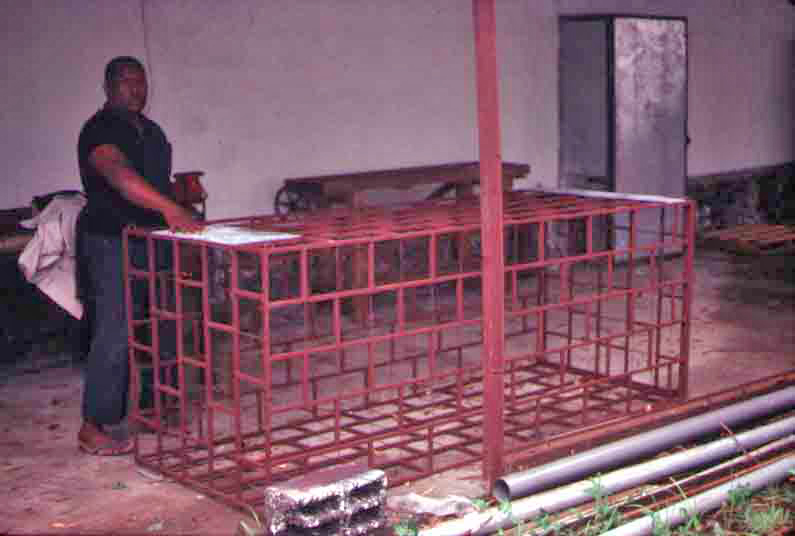Recollections of the Past 30 years pursuing Coelacanths
Jerome Hamlin, creator dinofish.com
The sonar units were not able to locate coelacanths in any practical manner, and that being the case, we lost our advantage over the local fishermen, who appeared to simply catch them by chance from time to time. As a fallback, I had agreed to try a technique known as long lining, that had been suggested by Dr. Jack Music. With this you bait a number of hooks on a line and set it out overnight attached to a buoy for recovery in the morning. The problem was we had no buoys, so we decided to use a BC vest one of the aquarium staff had brought along. The next morning the BC vest had vanished along with the longline. We soon learned that the fishermen scarf up anything they find floating on the sea- often items dumped from passing freighters. The staffer and his colleague back in New York who had loaned him the vest were not pleased.

Mombassa with the coelacanth recompression cage built for us by the mechanical staff of the U.S. consulate, Moroni, Comoros.
We timed out on that visit, and although a few of us extended our stays beyond the initial plan, we all returned home for Christmas week, 1987. However, I had a back up plan in place. The consulate mechanics had built me a steel tube cage, larger and more robust than the chicken wire affair Jean Louis Gerod, the local divemaster, had been using to try to stabilize caught coelacanths back at depth. This would stay behind and be used if a coelacanth were caught by local fishermen after we left. If so, we would come right back. And that is exactly what happened.
The telex arrived in New York, New Years day, 1988, from the U.S. consulate staff in Moroni, Grand Comoro. A coelacanth had been caught New Years Eve, and placed in our cage by Jean Louis Gerod, then returned to the depths. (Jean Louis Gerod would later state that the fish bit him on the hand!) Mombasa was overseeing. There was one problem. The marker for the cage had disappeared- sound familiar? I consulted with the Lowrance company on using the sonar units we already had over there to locate the cage. Then I flew back to the Comoros. Peter joined me soon after, and after a bit, Dr. Willy Bemis himself. I had maintained a 150-gallon home saltwater aquarium for more than 20 years, so I was familiar with ammonia build up, nitrate and nitrite cycles, PH, and aeration (oxygen) techniques. I had even once given mouth to mouth resuscitation to a lionfish (blowing water past its gills via a plastic tube), so I was confident I could handle the early stages of a coelacanth recovery before professional aquarium staff arrived. The question was, "Where is the cage?"
